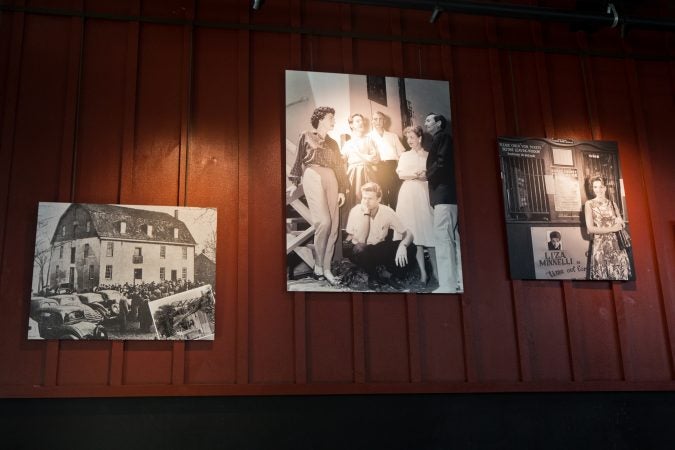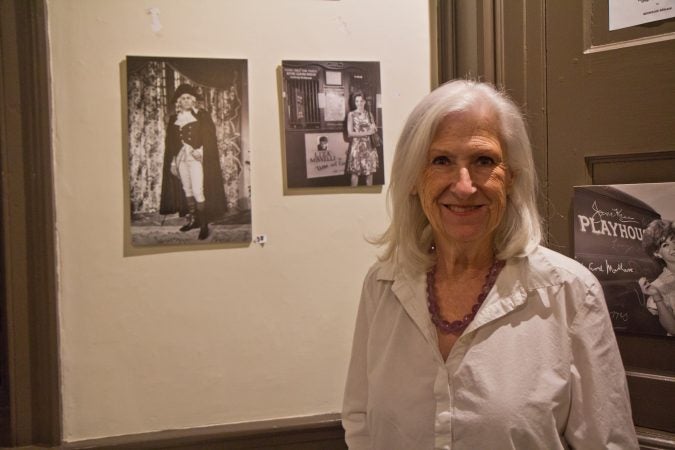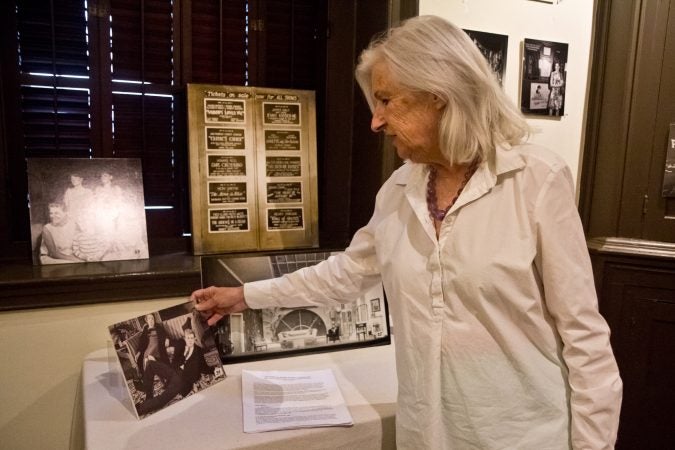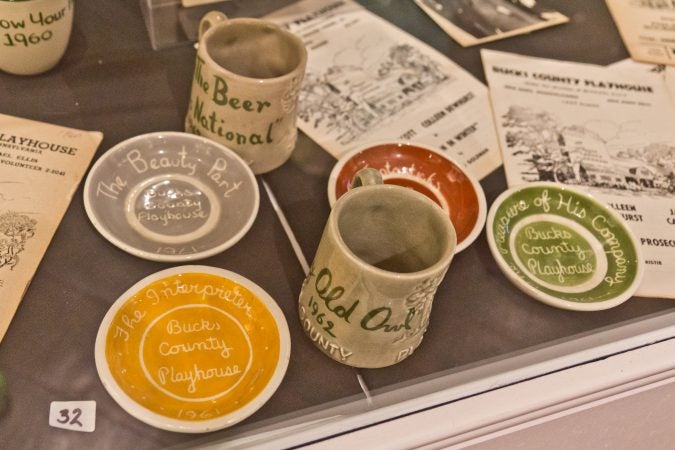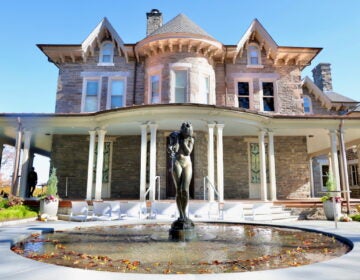Bucks County Playhouse is looking for its history — and needs your help
As it celebrates its 80th anniversary, the Bucks County Playhouse is looking for everything from posters to playbills to piece together its missing history.

The Bucks County Playhouse was once a working mill but was converted into a summer theater in the 1930s. (Kimberly Paynter/WHYY)
The Bucks County Playhouse is trying to piece together its 80-year history — and it’s looking for your help.
After its new owners bought the building in 2011 in hopes of reviving the shuttered theater, they discovered that zero physical artifacts — not a single poster or playbill — had been saved.
Now, the theater and the local historical society are asking people to dig through their closets and attics for anything to document these missing pieces of the past.
A rich history to be discovered
The Bucks County Playhouse opened in 1939 when a former grist mill in New Hope was converted into a summer stock theater. At the time, theaters were popping up in semi-rural areas all over the northeast as both artists and audiences looked for a way to escape the heat of Manhattan.
“The summer stock movement got its start because Broadway wasn’t air-conditioned,” said Alex Fraser, the theater’s producing director. “All the theaters closed down Memorial Day and reopened Labor Day because the summer was too hot in New York.”

The Bucks County Playhouse was actually a little late to the summer stock game, but nevertheless proved to be a hit. People came to the riverside theater to cool off and to get a glimpse of future stars — like Liza Minelli who, at age 18, got one of her first professional stage roles as the tomboy lead in “Time Out For Ginger” in 1964, and Grace Kelly who made her professional debut in “The Torch-Bearers” in 1949.
“She had a tiny role, but because she was from such a famous family, the producer was very smart,” said Dee Dee Bowman of the New Hope Historical Society. “All the high society folks from Philadelphia would flock to New Hope to see one of their own.”
Neil Simon, then a frustrated TV writer, had his first play produced at the Bucks County Playhouse. Harpo Marx, the silent clown from the Marx Brothers, spoke lines on stage for the first and only time in his career in “The Man Who Came to Dinner.” Bob Fosse, who would later become famous for directing and choreography, starred in the 1952 revival of “Pal Joey” before it went to Broadway.
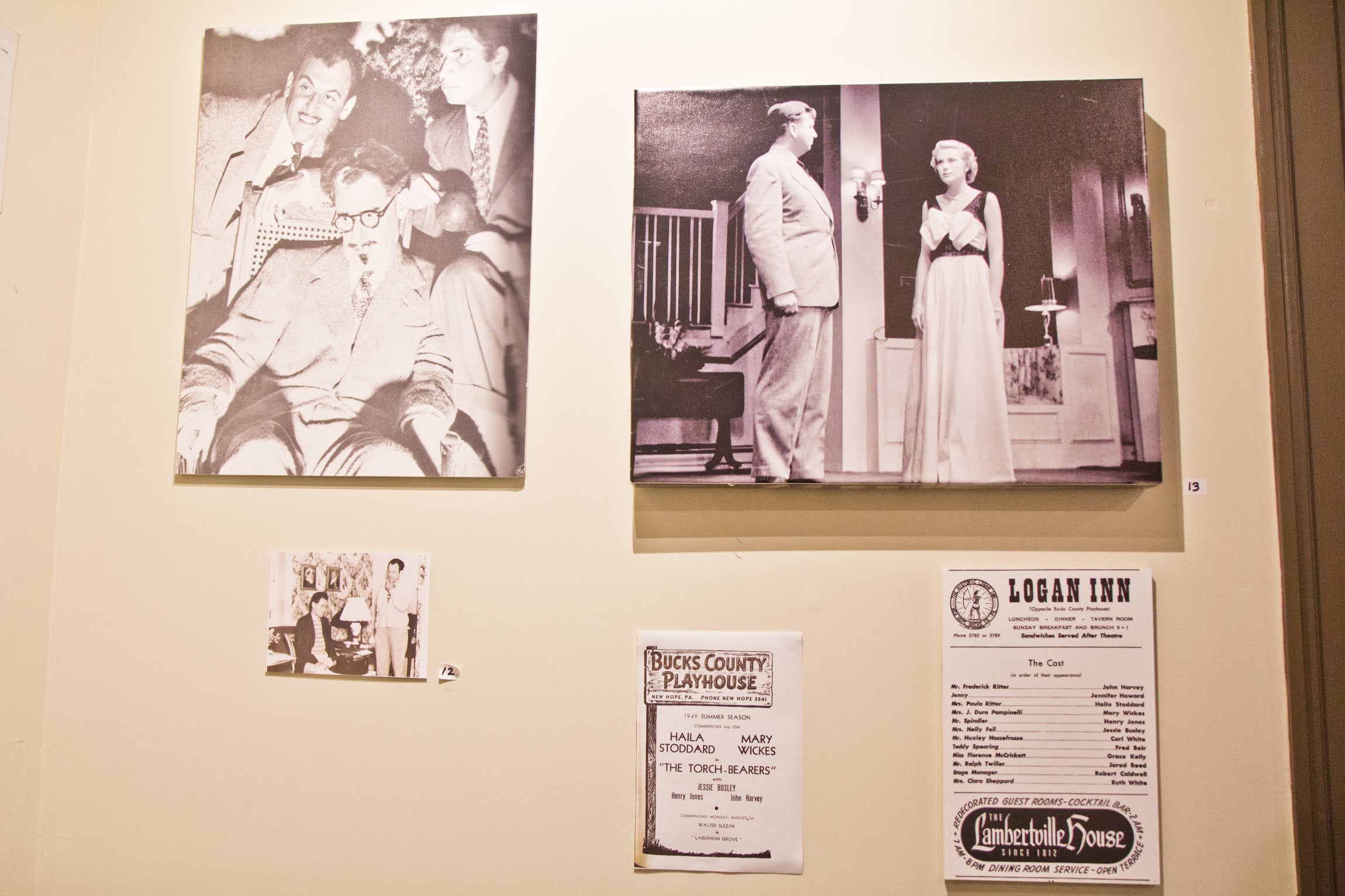
The heyday of the Bucks County Playhouse ended with the advent of air-conditioning in the 1970s. With no need to shut down for the summer, Broadway churned on all year long as getaway summer stock theaters dried up.
The playhouse went on a downward slide until 2010, when it declared bankruptcy and the building was foreclosed. It was snapped up at auction by a non-profit developer, Bridge Street Foundation, which began pouring millions into its renovation.
Now a state-of-the-art theater, the playhouse opened a restaurant and bar on a deck overlooking the river earlier this year.
Stars from the past sometimes come back.
“Jessica Walter made her debut here in 1959 as an apprentice. She came back and did ‘Steel Magnolias’ a few years ago,” said Fraser, referring to the star of “Play Misty for Me” and TV’s “Arrested Development.”
“She walked in the door and burst out in tears: ‘It was never this nice! It was never this nice!’” Fraser remembers. “Even at its best, it wasn’t this nice.”

Looking for ‘ah-ha’ moments
However, very little remains of what the theater had been like.
When the new owners first explored the building, they found nothing inside. Not a poster, playbill, or advertisement was saved. No old contracts, no record of which plays had been produced there for 70 years. Not a shred of its history remained.
Five years ago, through the Michener Art Museum in Doylestown and with the help of curator and archivist David Leopold, artifacts began to be unearthed. Photos emerged. Names of actors and playwrights and plays were learned.
“It completely freaked us out,” said Fraser. “To see all these amazing artists — these were much larger shoes to fill.”
Now Fraser is working with the New Hope Historical Society to solicit “material culture” related to Bucks County Playhouse.
Across the street from the theater is the Parry Mansion, a historic home-turned-museum that once belonged to the family that built the original flour mill. One of its rooms has a small exhibition of old photos and posters from the theater.
“Perhaps this exhibit will trigger more of those ‘ah-ha’ moments for people who have a lot of paper in their house and just can’t keep it the way it needs to be kept,” said Bowman.
Among the artifacts are a set of ashtrays from 1961, each hand-painted with a title of one of the productions from that season. It includes “The Beauty Part” starring Burt Lahr, already famous as the Cowardly Lion in “The Wizard of Oz.”
There is also the original stage curtain painted to depict the town of New Hope, which was discovered in the theater, stuffed behind a wall.
Bucks County has a rich artistic history, including the Pennsylvania Impressionism movement anchored by Daniel Garber and Edward Redfield, and best-selling authors James Michener and Pearl S. Buck. Lyricist Oscar Hammerstein lived there, and his descendants are attempting to turn his former home into a museum.

The region has been called the “Genius Belt” for its creative legacy. Fraser wants Bucks County Playhouse to be included.
“To fill in the theater part of that history,” he said. “To complement the regional history with what happened at the playhouse.”
If you find a piece of Bucks County Playhouse history, send an email to archive@bcptheater.org.
WHYY is your source for fact-based, in-depth journalism and information. As a nonprofit organization, we rely on financial support from readers like you. Please give today.




